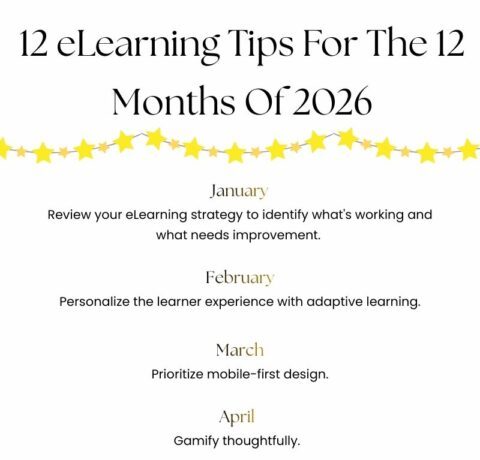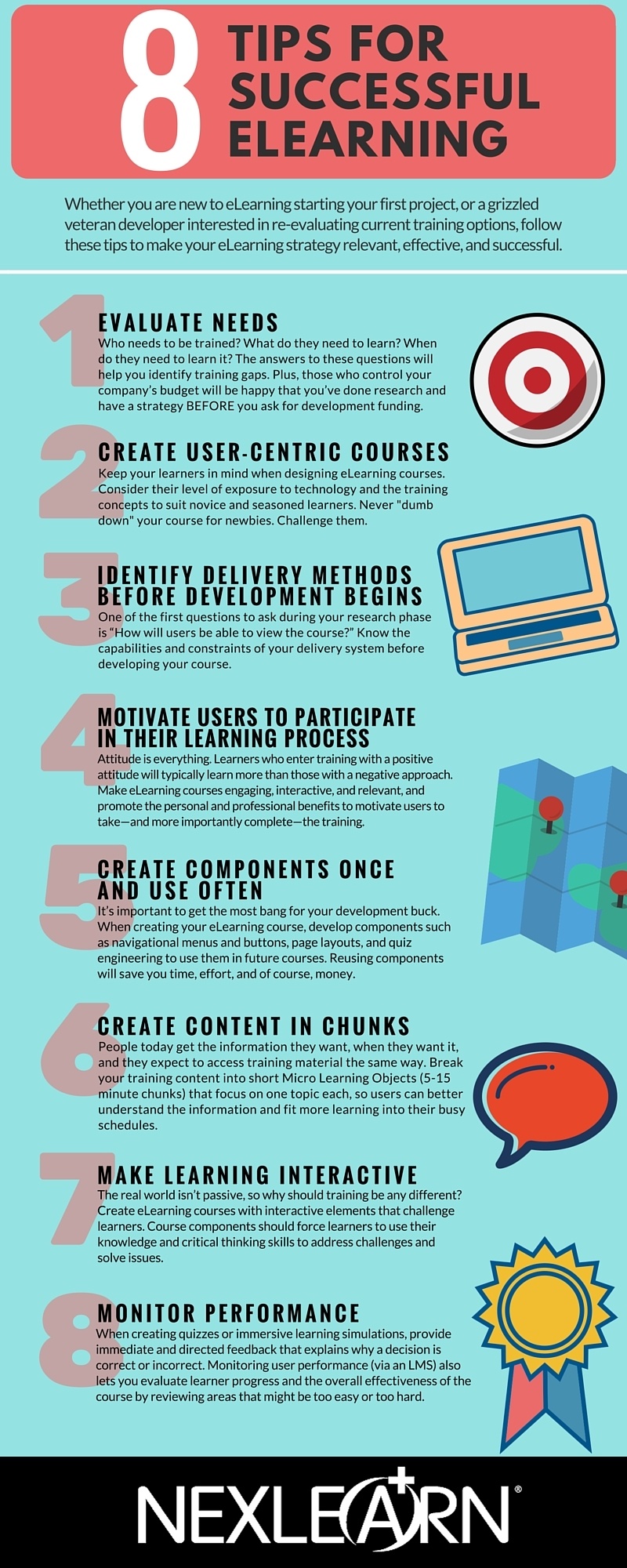8 Tips for Successful eLearning Infographic
The demand for developing quality eLearning programs and immersive learning simulations is skyrocketing. Company leaders are realizing the dramatic and immediate impact technology can have on learning opportunities and employee performance. Generation X and Y workers, as well as many Boomers, have grown up with technology, so the latest tools, apps and gadgets are important to keep employees engaged and active in their learning. Your job as an instructional designer can become much easier if someone in a position of authority at your company realizes the power of eLearning and understands how you want to use it. Whether you’re new to eLearning, or a grizzled eLearning veteran who wants to re-evaluate current training options, here are eight tips for making your eLearning strategy successful.
1. Evaluate Needs
Who needs to be trained? What do they need to learn? When do they need to learn it? The answers to these questions will help you identify training gaps. Plus. those who control your company's budget will be happy that you’ve done research and have a strategy BEFORE you ask for development funding.
- Find out more on training needs analysis.
2. Create user-centric courses
Keep your learners in mind when designing eLearning courses. Consider their level of exposure to technology and the training concepts to suit novice and seasoned learners. Never “dumb down" your course for newbies. Challenge them.
3. Identify delivery methods before development begins
One of the first questions to ask during your research phase is “How will users be able to view the course?" Know the capabilities and constraints of your delivery system before developing your course.
4. Motivate users to participate in their learning process
Attitude is everything. Learners who enter training with a positive attitude will typically learn more than those with a negative approach. Make eLearning courses engaging, interactive, and relevant and promote the personal and professional benefits to motivate users to take -and more importantly complete- the training.
5. Create components once and use often
It’s important to get the most bang for your development buck. When creating your eLearning course, develop components such as navigational menus and buttons. page layouts, and quiz engineering to use them in future courses. Reusing components will save you time. effort. and of course. money.
6. Create contents in chunks
People today get the information they want, when they want it and they expect to access training material the same way. Break your training content into short Micro Learning Objects (5-15 minute chunks) that focus on one topic each. so users can better understand the information and fit more learning into their busy schedules.
7. Make learning interactive
The real world isn’t passive. so why should training be any different? Create eLearning courses with interactive elements that challenge learners. Course components should force learners to use their knowledge and critical thinking skills to address challenges and solve issues.
8. Monitor performance
When creating quizzes or immersive learning simulations, provide immediate and directed feedback that explains why a decision is correct or incorrect. Monitoring user performance (via an LMS) also lets you evaluate learner progress and the overall effectiveness of the course by reviewing areas that might be too easy or too hard.







You can adjust your cookie preferences here.